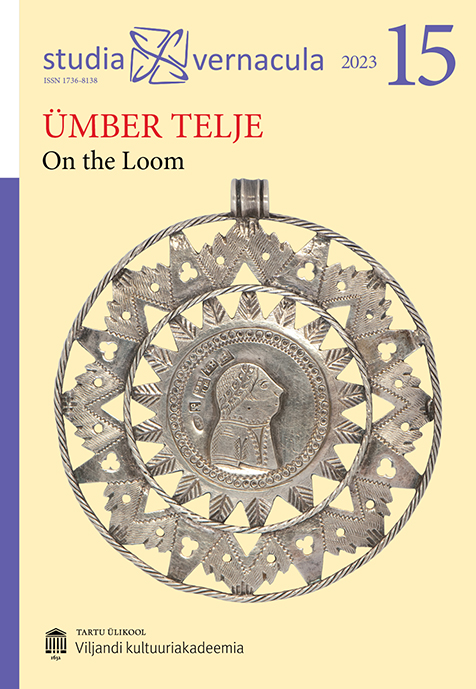Käsikirjaliste mustrivihikute tähtsus kangakudumise mustrite levimise ajaloos / The historical importance of weaving pattern books
DOI:
https://doi.org/10.12697/sv.2023.15.120-150Abstract
The late 19th century can be considered a transformative period in the history of Estonian textile weaving, during which the weaving of art fabrics onso-called Finnish looms became increasingly widespread. From this period onwards, an increasing amount of Estonian women started to study weaving in Finland, and Finnish women were invited to Estonia to teach.
The article describes, based on various surviving sources, the spread of weaving patterns in Estonia and the functioning of various weaving courses and schools during this time period. It also provides an overview of the weaving pattern books, which were prevalent in Estonia until the first decades of the 20th century, based on samples preserved in museums and private collections.
Pattern looms, also known as countermarch looms, Finnish looms, and sometimes also “artisan weavers’ looms”, were expensive and seemed complicated to an average weaver. Therefore, by the end of the 19th century, these types of looms were not yet widely prevalent in Estonian peasant households. They only started to become common during the early years of the independent Republic of Estonia, and it was soon a matter of honor to have Finnish looms in the house.
With the establishment of weaving schools and the spread of various courses in the late 19th century, new patterns from Europe reached Estonian households. Countermarch looms that arrived via Finland offered more opportunities for weaving different textile surfaces. Also, it was possible to weave wider fabrics on these looms compared to simple looms that had been used in farmsteads earlier.
The development of weaving pattern books and textbooks in time shows how the spread of more complex looms into homes went hand in hand with the emergence and popularity of women’s handicraft schools. The industrial revolution that altered the previously established modes of production from the end of the 18th century to the beginning of the 19th century did bring more affordable factory products to homes. The national awakening in turn created a situation where the promotion of handicrafts was back on the social agenda.
The industrial revolution, new trade relations, and the intensification of cultural exchange with neighbouring countries provided Estonian women with the opportunity to improve their position in society. From the beginning of the 20th century, cultural and educational interactions that had begun at the end of the previous century between educated and progressive women and women’s organisations became even more frequent.
Keywords: weaving on loom, women’s crafts, housekeeping education, weaving pattern books, textile artisans

